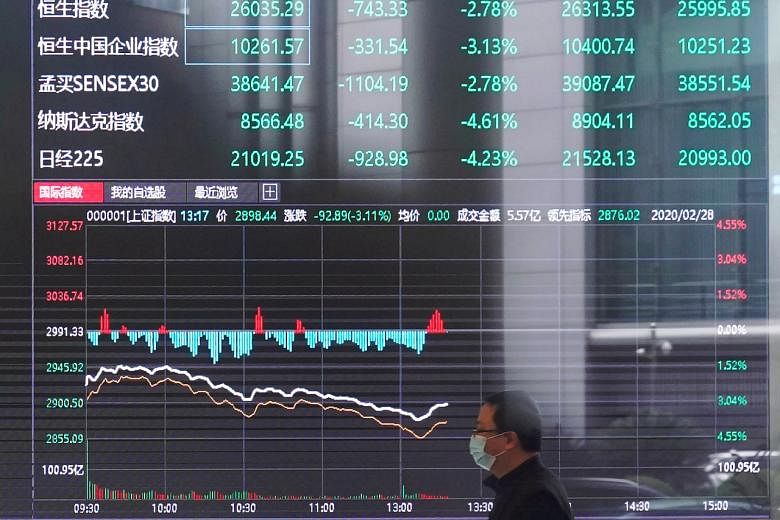SYDNEY (BLOOMBERG) - Be it stocks, bonds or almost any other asset class, foreign cash is pouring into Asia on bets it will be fastest-growing region as the world recovers from the coronavirus pandemic.
The MSCI Asia Pacific Index rose to a record last week and a Bloomberg Barclays bond index is close to its highest in four years. The region's currencies are, on aggregate, the strongest since 2018 and commodities are also climbing. Little wonder when a Citigroup gauge of economic surprises in the region is at a level last seen in 2007.
The positive aftermath of the US election, encouraging progress on vaccines, abundant liquidity and an "improving growth pulse" in Asia have driven demand for the region's assets, according to Australia and New Zealand Banking Group (ANZ) head of Asia research Khoon Goh.
"We expect a controlled virus situation, improved global growth and ample liquidity to spur further inflows into the region," Mr Goh wrote in a note on Tuesday (Dec 8). "We expected continued strong inflows over the course of 2021, which will be supportive of Asia's asset markets."
Investors added the most money to emerging-market exchange-traded funds since January last week and the inflows were dominated by Asia, according to data compiled by Bloomberg. Chinese and Hong Kong funds saw the biggest demand, South Korean ETFs had a record inflow while no individual country suffered an outflow, the data showed.
On the fixed-income side, the appetite for Asia is also growing. Foreign holdings of China's debt have surged to a record 1.79 trillion yuan (S$366.6 billion) and global funds have bought more than US$2.5 billion (S$3.3 billion) of high-yielding Indonesia sovereign bonds this quarter, the most since September 2019.
Still, some strategists caution that the rush could slow, not least because inflows into China due to its inclusion into global bond indexes could taper off.
"Foreign-investor demand is likely to slow in December and in early 2021, as China's inclusion in two of the major indices is nearly complete," wrote Barclays Plc's Ashish Agrawal and Yile Gu in a note Tuesday. "Foreign investor flows are also showing signs of slowing in the other markets."
Debt Dynamic
But for now, the enthusiasm has even seeped into the derivatives market with Credit Suisse Group strategist Mandy Xu highlighting strong bullish flow for call options on Asian equities.
The recovery in China's economy - the world's second biggest - is a large part of the Asian attraction. Chinese exports jumped in November by the most since early 2018, pushing its trade surplus to a monthly record high.
Imports have also surged as Chinese factories ramp up production and that has helped push iron ore futures in Singapore to an all-time high. China is also bucking the global trend of greater economic stimulus amid the coronavirus, preferring instead to refocus on controlling its record debt burden.
"One reason why we think Asia looks so good, particularly north Asia, is that it had to spend less money keeping the economies going," Sean Taylor, chief investment officer for Asia Pacific at DWS Group said at a briefing last week. Other countries have taken on a lot of debt which "is going to affect growth rates and that's why the medium-term rally is relatively good for Asia."

